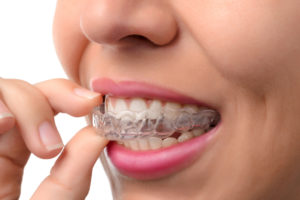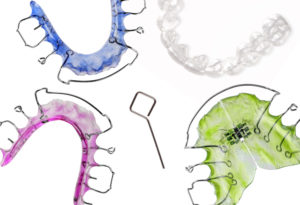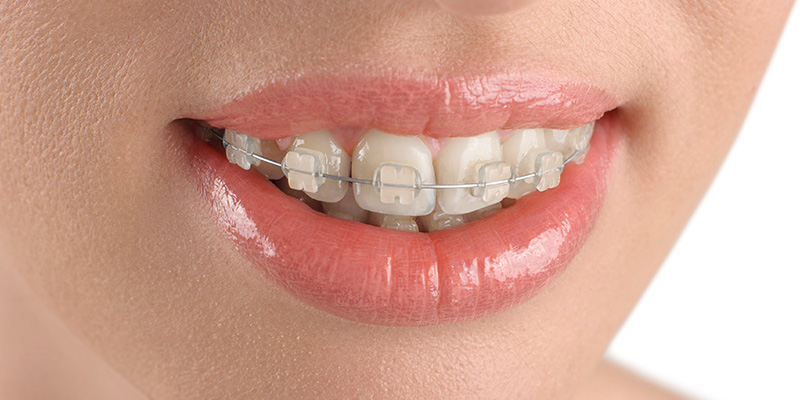Retainers and Retention
Removal of braces does not indicate the end of orthodontic treatment – only the end of the active phase of treatment. After the active appliances (whether braces, Invisalign, or other appliances) are discontinued, a passive appliance must be utilized to maintain the orthodontic correction because of the inherent tendency for teeth to move back to their original positions.  More here
More here
Relapse is most likely to occur immediately following active treatment and the degree of long-term stability increases in proportion to the duration a patient continues to wear retainers. We recommend full time retainer wear for 12 months following discontinuation of active treatment and then at least nighttime wear indefinitely thereafter. It should be assumed that retention (maintenance) of orthodontic correction is a lifetime endeavor – because there are no guarantees that teeth will not become crowded even many years after wearing retainers. It is a very common occurrence to find relapse in patients who have worn retainers faithfully for years and then suddenly decide to stop wearing them. Even those who have never had orthodontic treatment may discover that their teeth begin to crowd as years go by. Throughout life, the body never stops changing – this includes the teeth! But as long as retainers are worn and periodically inspected, your beautiful smile can be maintained. Its up to you!
Caring for your removable Hawley retainers:
Hawley retainers are made of acrylic-type plastic and embedded stainless steel wires. The plastic portion is quite brittle and vulnerable to breakage. The wires, while not brittle, will easily distort if undue pressure is applied. To avoid breakage when cleaning, fill the sink with water and hold the retainer over the water-filled sink while brushing it with your toothbrush and toothpaste.
Your retainers should always be cleaned after removal from the mouth (at least twice per day if wearing full time and once in the morning if wearing only at night). The retainer will accumulate the same bacterial plaque that forms on your teeth. If not regularly cleaned, this plaque can be identified as a white film on the retainer. If you notice any white accumulations on your retainer, then cleaning has not been adequate. If you get accumulations on your retainer that won’t come off, we can remove it in the office by ultrasonic cleaning in a special solution. Do not attempt novel cleaning methods. Do not attempt to soak your retainer in any type of cleaning solution. Do not subject your retainer to hot or boiling water – the plastic portion will easily distort and thereby ruin your retainer. You must focus on brushing each bracket on all four sides and then check to verify that all areas have been cleaned. 
Be very careful not to hold the retainer by its wires as this can easily cause them to become distorted.
Dogs love to chew on retainers! They are attracted by the smell and will often leap onto counter-tops to retrieve them. Therefore, always place your retainer in its case and place it in the medicine cabinet when not wearing it.
Retainers are often lost in restaurants when left on a plate or wrapped in a napkin. Never wrap your retainer in a napkin as others are likely to assume it is trash and throw it away. Retainers should always be stored in a retainer case when not in the mouth!
If you notice that your retainer does not fit quite right, or that something feels different, schedule an appointment immediately to have it evaluated. Its not worth the risk of having your teeth move out of alignment. Problems are easy to avoid but costly to fix!


0 Replies to “Removal of Braces Does Not Indicate The End Of Orthodontic Treatment”